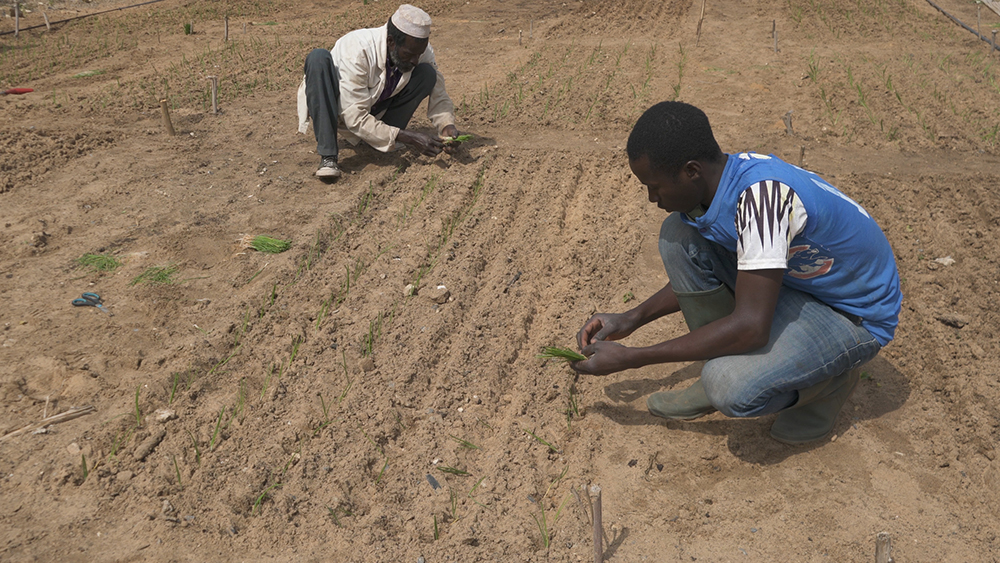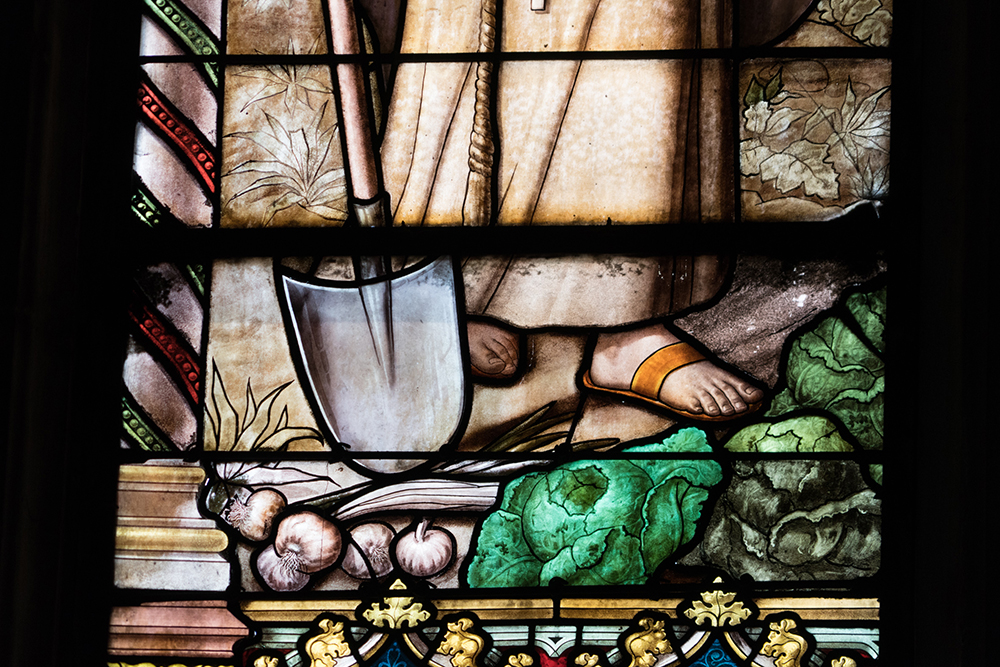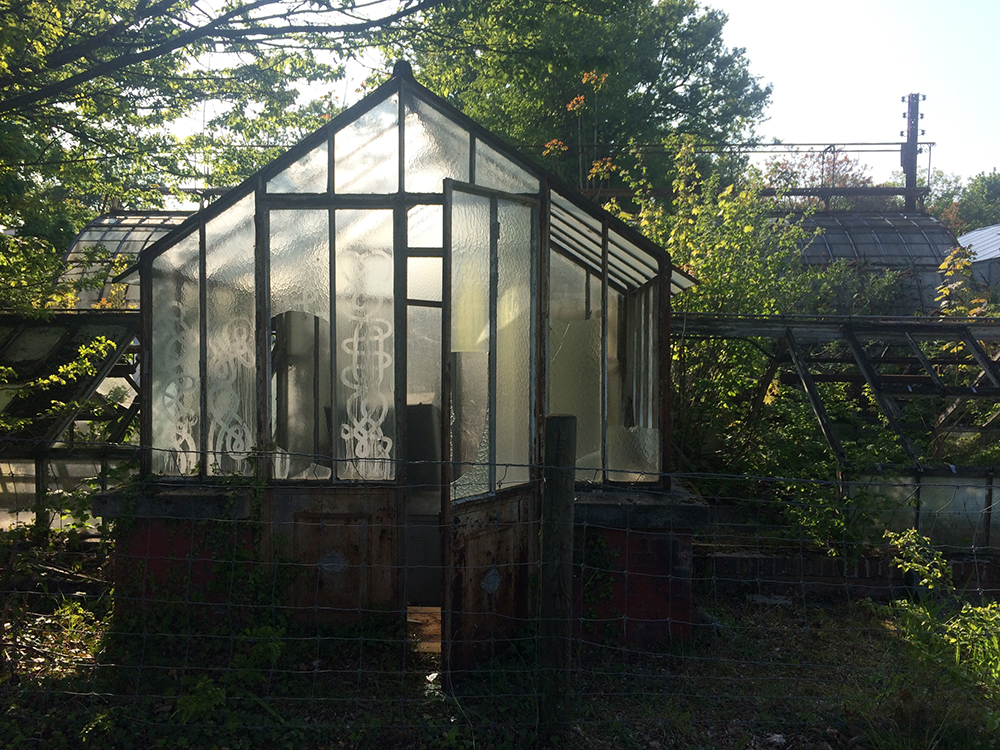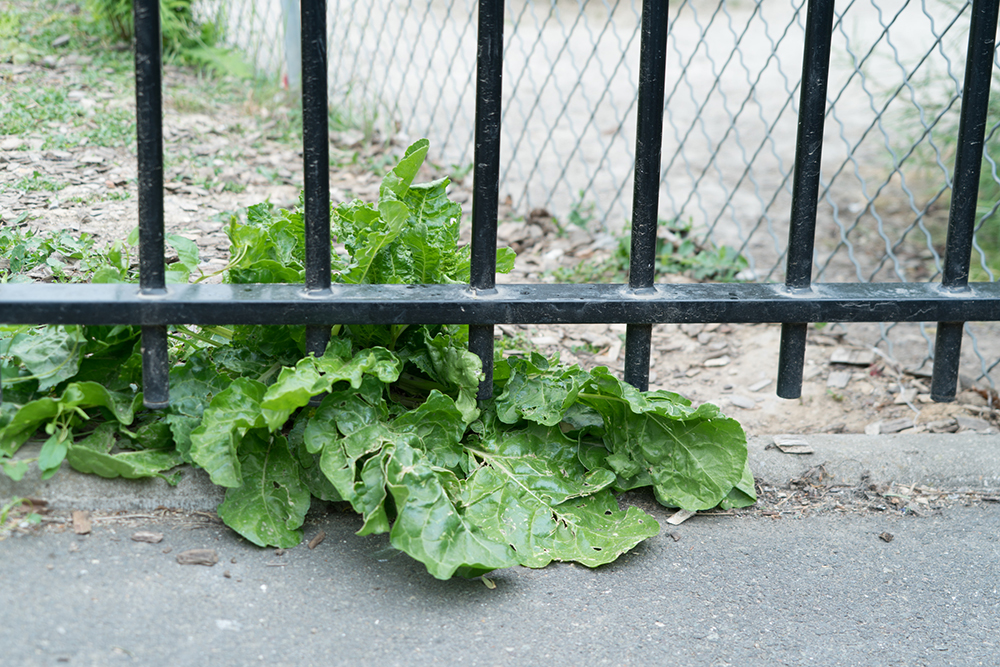SOIL AFFINITES ―
Exhibition from 11 October to 8 December 2018
Opening Thursday 11 October 2018, 6 pm

In residence at Les Laboratoires d’Aubervilliers since April 2017, Uriel Orlow has been engaged in a project which continues his interest in plants and their relation to specific local and (post-)colonial histories this time with a specific focus on vegetables. Soil Affinities returns to Aubervilliers’ 19th century market gardening past which ended when the factories started to take over the ground, around the same time as European countries, including France, began to develop a colonial agriculture in Africa. After a year of research in Aubervilliers and in West Africa (Mali and Senegal), Uriel Orlow presents the results of his residency in the form of an exhibition at Les Laboratoires d’Aubervilliers. Soil Affinities is guided by a series of interconnected questions : How can plants become a compass to map historical and contemporary (post-)colonial relations? What remains today of Aubervilliers’ market gardening past apart from the town’s street names?
When the market gardeners — the maraîchers — had to leave the Marais in Paris to make space for the bourgeois and settled in the fertile Plaine des Vertus of which Aubervilliers is a part, they took their earth with them and set up a cultivating technique which until 1900 provided over 90 percent of all the vegetables sold at Les Halles in Paris, and which can thus be considered as a precursor of both intensive farming and permaculture. Similarly, vegetable varieties take their place of origin with them as they travel: the famous choux de Milan became a staple crop in Aubervilliers, as was the local onion variety jaune paille des Vertus, which has been cultivated in West Africa since.
In 1899, following the infamous Berlin conference which divided Africa between the European powers, and around the same time as suburban agriculture had to make space for new industries and their factories in Aubervilliers, the French colonial department created the colonial test garden at the Eastern end of the Bois de Vincennes in Paris.This would become a hub for plants and seeds from the new world. In specially designed transport boxes — the so called Ward crates — plants would be shipped from the Americas to Paris and from there to the newly set up test gardens in Dakar, Saint Louis and elsewhere in West Africa. Over time those same gardens also started experimenting with and cultivating European staples — such as tomatoes, peppers, green beans, onions, cabbage etc. — for the growing French settler population.
The large scale cultivation of staple vegetables in West Africa — as opposed to the previous economic plants such as cocoa, coffee, peanut etc. — took off after independance from France in 1960 with a number of French and European companies creating industrial farms in Senegal producing almost exclusively for Rungis, one of the biggest wholesale markets in Europe, just outside Paris.
What is left of the agricultural heritage in Aubervilliers ? If one looks closely ― following the footsteps of Paul Jovet, a 20th century botanist and teacher in Aubervilliers in the 1920s who, on his lunch breaks, collected plants growing in the city, as opposed to his colleagues at the National Natural History Museum in Paris who were much more excited about discovering new exotic species overseas ― as one walks the streets of Aubervilliers, one can find many descendants of market varieties growing on industrial wastelands as and around the town’s pavements.
Soil Affinities traces these lines and networks of terrestrial connections between plants and people, across different geographies and temporalities, through video, photography, and other documents gathered in France, Senegal and Mali over the past year. The exhibition is conceived as a display of these materials in their state of germination, in a horizontal, non-linear manner that allows them to speak for themselves as well as cross-fertilise each other. The display invites to reflect on structural arrangements and subjective processes produced by plant displacement in colonial, post-colonial and post industrial settings.
The globalization of cultures generating social and economic divisions of land use and labour, can be re-thought through the prism of plants.
The exhibition will be accompanied by film projections and workshops in collaboration with La Semeuse, a research unit on urban biodiversity part of Les Laboratoires d’Aubervilliers.
___________________________________________
Exhibition on view
Wednesday to Saturday, 2 pm to 6 pm
& by appointment at 01 53 56 15 90
or by email at info@leslaboratoires.org
___________________________________________
Workshops and screening during the exhibition Soil Affinities :
Saturday 13 October at 4 pm ― Exhibition visit and exploration of the virtues of plants in La Semeuse's garden with Jean-Charles Teulier (botanist)
Saturday 20 October at 4 pm ― Exhibition visit with Bouba Touré (writter, photographer and co-founder of the Samandiki Coura Cooperative in Mali)
Saturday 27 October at 4 pm ― Exploration of the worker virtues garden with Léonard Nguyen Van Thé (gardener)
Saturday 10 November at 4 pm ― Exhibition visit with Bernadette Lizet (ethnobotanist / ethnobiologist)
Saturday 8 December at 4 pm ― Screening of Lettre paysanne (1975) film by Safi Faye & Closing of the exhibition with the participation of Uriel Orlow



_____________________
This project is supported by the Département de la Seine-Saint-Denis « aide à la résidence arts visuels », by Fluxus, by Pro Helvetia, Swiss Foundation for culture and by FNAGP, Fondation Nationale des Arts Graphiques et Plastiques.
1/. Soil Affinities (essais de variétés d’oignons, ISRA, Dakar (anciennement jardin d’essai colonial français), 2018 © Uriel Orlow
2/. Soil Affinities (Vitrail de Notre-Dame des Vertus, Aubervilliers), 2018 © Uriel Orlow
3/. Soil Affinities (ancien jardin colonial français, Vincennes), 2018 © Uriel Orlow
4/. Soil Affinities (laitue sauvage dans la rue, Aubervilliers), 2018 © Uriel Orlow

